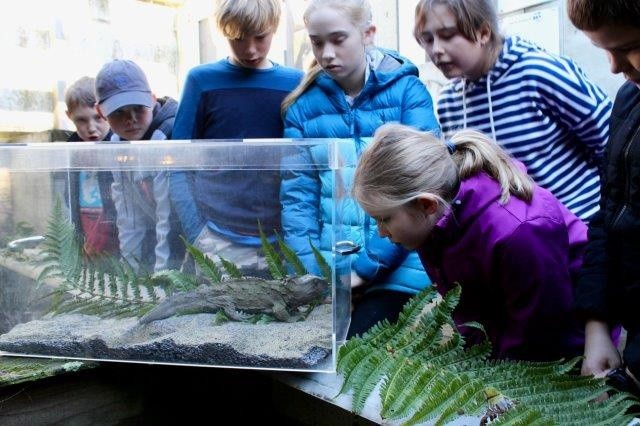NZ Community
Survey of rare wildlife aims to help boost biodiversity

The preservation and protection of a wide range of native flora and fauna in a delicate South Island valley has taken a step forward with a recent survey of the area.
The survey was conducted by Wildland Consultants for the New Zealand Conservation Trust in the Cass Valley, at the north end of the Craigieburn Range.
It was funded by a grant of almost fifteen thousand dollars from the ANZ Staff Foundation.
The results will be used as a comparison for future surveys, to give an indication of the effects its trapping programme is having.
“It’s really interesting to see the survey results,” says Janet Hellyer, the Trust’s Resource and Education Coordinator.
“When we repeat the survey in a few years’ time we will be able to see if we have made a difference to the wildlife that is there. Has anything increased, has anything decreased?”
Over the last four years, volunteers have been laying predator traps in the valley - home to a wide range of native birds, lizards, invertebrates (including dragon flies and butterflies) and indigenous and exotic plant species.
“We’re hopefully picking off the pests and predators - including rats, mice, stoats and weasels - and helping the native fauna to do well” says John Forrester, one of the volunteers.
So far volunteers have placed 46 traps in the valley.
These are monitored by people who own bachs adjacent to Grasmere Lodge, and other volunteers.
“It’s incredibly rewarding. I love being outdoors, it’s a great day out and you do feel like you are contributing,” says Forrester.
The volunteering is rewarding – but also hard work; checking the traps can take five to six hours, walking. There are trap lines around Castle Hill Village that can be done in an hour or two.
“Initially you have to carry the traps up there. Two traps weigh in at about 13 kilos – you take them up, set the traps, bait them, and ideally check every three to four weeks.”

"Everybody can play a part, no matter how small or how large in protecting our environment."
Janet Hellyer, New Zealand Conservation Trust
The New Zealand Conservation Trust’s mission is to protect and advocate for native species through conservation, education and collaboration.
“We spread the word about conservation and the importance of protecting our native species. As well as the importance of predator control” says Janet Hellyer.
“Our goal is to contribute towards New Zealand becoming predator free by 2050.”
The Trust also has trapping programmes in the Carlyle Valley, Craigieburn Forest Park and along Styx River. Recently they have been catching over 500 pests each year.
The Trust has been able to contribute to the Kiwi recovery program at its purpose-built kiwi breeding centre at Willowbank Wildlife Reserve.
Over 500 chicks have been cared for here – with more than 370 hatched and others arriving as juveniles.
It also offers educational visits for schools and community groups.

Receiving no government funding, the Trust relies on donations, including the grant of $14,762 from the ANZ Staff Foundation which paid for a team from Wildland Consultants to conduct the baseline survey of Cass Valley.
David Bricklebank, the chair of the ANZ Staff Foundation Advisory Board, says “the Trust and the volunteers are working hard to increase biodiversity and control predators.
“The survey will provide an invaluable guide to where they are now and where they are going.”

SURVEY RESULTS
The survey has found there are a large number of birds in the valley, including kea.
“Kea are vulnerable to predators. So that’s prompted us to lay more traps,” says John Forrester.
“It’s helpful to know whether some of the traps need to be moved. Pest control can be very tricky. You can catch nothing, and then you move a trap a few hundred metres and all of a sudden you are catching predators.”
“We think there is increased bird life. But we had no gauge. Now that Wildlands has done their survey we have a mark in the sand,” he says.
Everyone thinks there is more bird life up there now than there was a few years ago. And it’s been noticed around the lodge.
There are lots of fantails lower down, there are kererū we have a good feeling we may be making a difference.”
The Trust is keen for more volunteers to help with their work.
But Janet Hellyer says they also hope to inspire people in their own backyards.
“I think sometimes people think they need to be scientists or biologists. But that’s not the case.
“I try to put the message across that you can make a difference in your own back yard.
“You can make a rock garden for skinks. Or put a bell on your cat so it doesn’t catch those skinks.
“Everybody can play a part, no matter how small or how large in protecting our environment.”

RELATED ARTICLES
NZ Community
NZ youth need voyages ‘more than ever’ after COVID
NZ Community